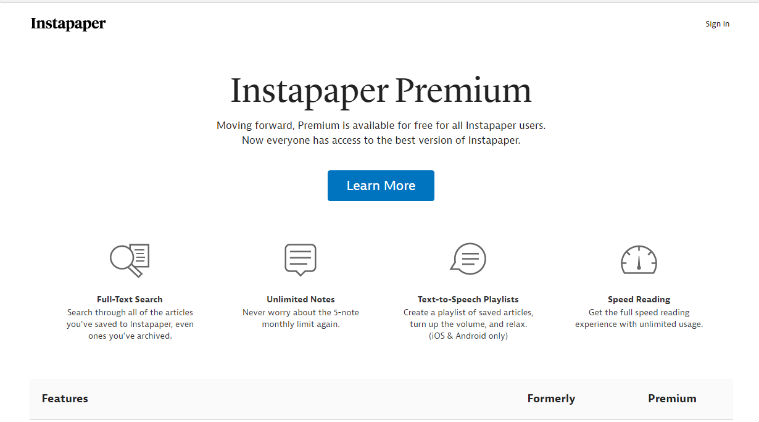
“A few users talk about in that it's a little addictive and I think what they're speaking to is consistency,” said Ziade. They were mostly men in button-up dress shirts and khakis (investors and ad sales types) or t-shirts and Converse sneakers (coders and young entrepreneurs). There was nervous laughter from the crowd, about three dozen or so young people. He said he is a fan of Instapaper, but wondered if the applications essentially make his job irrelevant.


He was standing next to Arment, and the pair were in a carpeted room at the Sheraton in Midtown last week, presenting their tools at the Web 2.0 Expo for a discussion titled “The Reading Experience and the Web.” A young man dressed in fitted jeans and Vans sneakers stepped up to a microphone and introduced himself as a user experience designer for websites and applications. “THIS IS THE BEGINNING OF THE END OF DESIGN,” SAID RICH Ziade, the creator of Readability, another online service that strips article pages from their original design and places them into formatted text. The fact that Instapaper seems to be heading in the opposite direction from so many sites starting up now -one that encourages reading long-form writing instead of short bursts of text and pictures -is part of what makes Instapaper refreshing. Perhaps, for the small (relative to the whole web) world that has adapted his product, mostly by word-of-mouth, there is a feeling of contributing to the next-next thing by sending Arment a small donation. "They might be, depending on how easily your mind is blown, but I’d feel better if you bought the Subscription because you wanted to support Instapaper." "Please don’t buy a Subscription solely because you expect these exclusive features to be mind-blowing," Arment wrote on Instapaper's site. But they will later have access to more exclusive features (like, say, a search function, as Arment mentioned on his Twitter). Currently, "subscribers" don't get anything special for giving him money, besides the ability to "turn off" the advertisements appearing on the Instapaper website. This week, he announced his very first, albeit small, scheme for more direct funding: " subscriptions," for three dollars for three months of service. Although a basic form of the Iphone application is available for free, Arment gets a cut any time someone downloads the $4.99 version, which is Ipad-friendly and includes more features. Instapaper is ad-supported (in the form of small, square ads on users' account pages and at the bottom of the article pages). He told The New York Times that 800,000 people have signed up for Instapaper, and 200,000 of them use it on a regular basis. Publishers, from the Associated Press to The New Yorker, sat down in meetings with him to discuss how they could use his features on their own sites and applications.Īrment recently stepped down as Tumblr’s lead developer to expand Instapaper into a full-fledged start-up.

Soon, friends, neighbors and followers started using it themselves. He could bookmark articles from The New York Times, The New Yorker, the tech blog Gizmodo load the text form each piece into a simple, custom-made template that stripped away formatting and distractions and queue the articles into an account so he could read the articles whenever he liked, online or off. It was a simple bookmarking tool, custom-made for Arment, that allowed him to save articles to read at a time and in a digital environment more conducive to reading. So he created an application to fix his reading experience. “There’s no time to sit and read anything when you’re going through 500 feed items while responding to email, chatting, and watching bad YouTube videos.” “I’ve become frustrated with the quick-consumption nature of many devoted blog readers,” Arment wrote on his website.


 0 kommentar(er)
0 kommentar(er)
